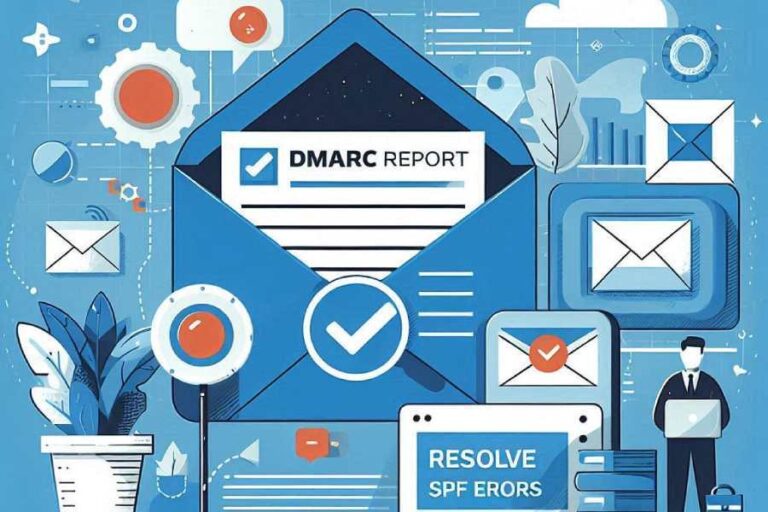Are you also tempted to take care of the Sender Policy Framework (SPF) on your own? Do you also feel it’s an easy task and you don’t need to onboard an email authentication expert or outsource the work to a cybersecurity agency?
Well, there are many business owners like you, but there are several reasons why you should ditch this idea and seek professional assistance instead. You probably want to save money or think that deploying SPF is just a one-time thing. However, you should know that SPF is a complicated protocol that is prone to errors and misconfigurations, thus requiring regular monitoring, maintenance, and adjustments.
Moreover, this security protocol can become a vulnerability if not handled adequately. It can affect DMARC’s functioning and ultimately give threat actors the perfect conditions to send malicious and fraudulent emails in your business’s name.
So, before you go on to try it yourself, read these 10 points.
1. SPF Can be a Pandora’s Box
SPF is complicated, especially for companies with multiple subdomains and an extensive email infrastructure. Different subdomains have different operational needs and risk tolerances, making it difficult to identify suitable failure mechanisms.
SPF also demands you to add the sending sources of third-party vendors who send emails on your behalf. An expert’s experience is required to deal with their email authentication preferences and strike the right balance.

Moreover, it’s important to realize that SPF alone may not provide sufficient protection against email spoofing and phishing attacks. Without technical expertise, you may struggle to implement complementary email authentication mechanisms like DKIM and DMARC, leaving your email infrastructure vulnerable to exploitation.
2. Misconfigurations are Common
SPF syntaxes are divided into three categories: mechanisms, qualifiers, and modifiers. Certain rules govern the use of these syntaxes, and failing to adhere to them triggers misconfigurations that lead to overly permissible or invalid SPF records. Identifying and resolving the root cause of SPF failures effectively may require assistance from knowledgeable professionals.
Of course, you can learn about the syntax rules and ways to fix the misconfigurations if you choose to DIY SPF, but it will take some time for you to gain the expertise. While you will be in your learning phase, your domain would be likely to have security gaps, and these loopholes are exactly what threat actors look for.
3. Constant Changes and Updates Can be Daunting
Due to both malicious and ethical technical progressiveness, SPF best practices change and evolve over time. To keep up with these constant changes, you will be required to actively read about them and be in touch with people who are experts in SPF deployment or are directly involved in the email security industry. If this still seems like something you can take care of without hampering your other responsibilities, then you may proceed with DIY-ing SPF.
4. You Aren’t an Expert
Managing SPF requires knowledge of DNS records, email authentication protocols, and email delivery mechanisms. Companies lacking in-house expertise may struggle to implement SPF effectively. While we agree that there are resources available online for SPF implementation and troubleshooting, it may be challenging to interpret and apply this information effectively without technical expertise. Moreover, limited support options may be available for addressing SPF-related issues, especially for non-technical users.

5. SPF Can Eat Up Your Precious Hours
Monitoring, managing, and staying updated on changes are time-and resource-consuming responsibilities that may divert you from other critical tasks. Professional assistance frees up your time and ensures efficient management.
6. Integration Requires the Understanding of the Nuts and Bolts
The person in charge should know the nuts and bolts of the overall technical infrastructure to create an SPF record tailored to your company’s cybersecurity needs. You should understand where your technical infrastructure stands in terms of malware detection, data loss prevention, email encryption, incident response planning, mitigation, etc.
Seamless integration of SPF with other security tools and authentication systems is non-negotiable. And if you are not a qualified cybersecurity expert, you are likely to goof up the integration process.
7. Monitoring is Time-Consuming and Requires Technical Expertise
SPF requires ongoing monitoring and maintenance to address changes in email traffic and potential security threats. Sometimes, the technical feedback is in formats that can be difficult to decipher for someone from a non-technical background. The time spent in decoding them can used in tasks that you are actually trained and qualified to do.
8. Compliance Can be Overwhelming
Certain industries and regions have specific email security and compliance requirements. Professionals understand these requirements and ensure that SPF configurations align with regulatory standards.
Failure to comply may cause delivery issues as many email service providers mark non-compliant domains as spam or reject them outright, causing important conversations to go undelivered. You may also end up inviting legal liabilities and regulatory penalties, especially if an incident leads to a data breach. Needless to say how all these can result in loss of business opportunities, exclusion from partner networks, operational disruptions, poor sales, and financial damages.
9. Overall Cost-Effectiveness
While DIY approaches may initially seem cost-effective, they can lead to hidden costs due to misconfiguration, downtime, and security breaches. Professional assistance provides long-term value by reducing risks and optimizing email security.
10. Lookup Limit Can be a Headache
SPF has a lookup limit of 10 to avoid straining DNS infrastructure and performance issues, as each DNS query consumes resources on both the querying server and the authoritative DNS server. Another reason for this limit is that it protects DNS servers from DDoS attacks that exploit SPF record processing.
If your organization’s email infrastructure is complex and extensive, your SPF records are very likely to reach this limit. Having a technical expert on board is advised as this issue is resolved by SPF flattening, caching, or using mechanisms like “include” and “redirect.”
If you are still dubious or confused about the decision not to DIY SPF, talk to us for more clarity. Who knows, maybe you are actually capable of handling email authentication on your own.



